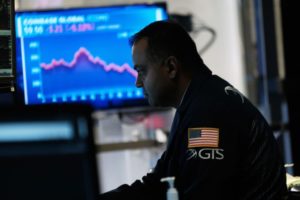In 2008, Washington Mutual became the largest failed bank in US history. Fifteen years later, Silicon Valley Bank became the second-biggest financial institution to collapse, sending shockwaves throughout the banking system and leading to plenty of speculation about what comes next for the prominent capital lender in the startup community. Well-known industry names suggest a government bailout or private acquisition, Republicans are rejecting the idea of taxpayer-funded intervention, and the White House thinks everything is benign.
CNBC host Jim Cramer told his audience that SVB was in great shape. Forbes added SVB to its 2023 annual ranking of America’s Best Banks for the fifth consecutive year. Floated shorts were just 5%. How did anyone miss this? So, what is really happening?
The Collapse of Silicon Valley Bank
Silicon Valley Bank, a unit of SVB Financial Group that was founded in 1983, announced in a Mar. 8 letter to shareholders that it required $2.25 billion to bolster its balance sheet after a sharp drop in deposits. The company blamed rising interest rates and a slowing economy that negatively impacted private and public capital markets for its fiscal troubles. In addition, it was revealed that the business invested customer deposits heavily into long-term Treasury bonds, which have been highly sensitive to the US central bank’s quantitative tightening campaign.
With the writing clearly on the wall, investors slammed the sell button and shaved off about $10 billion in market value in one session, sending the stock plummeting 65%. SVB Financial bonds also tanked to 31 cents on the dollar. In addition to the selloff, the panic resulted in a bank run, with customers taking out a whopping $42 billion of deposits by the close of business on Thursday, leaving a negative cash balance of $958 million.
Insiders may have seen the signs earlier than others as Securities and Exchange Commission (SEC) filings revealed that CEO Greg Becker exercised his stock options on Feb. 27 (converted his options into stocks) and immediately sold his shares for a $2.27 million profit. Unfortunately, while he sold his SBV stake at prices ranging from $285 to $302, the security became almost worthless as it crashed to nearly $42.
The Department of Financial Protection and Innovation of the State of California shut down the financial institution, while the Federal Deposit Insurance Corporation (FDIC) took over operations and renamed it the Deposit Insurance National Bank of Santa Clara. The plan for Monday morning is to reopen its main office and 13 branches. “At the time of closing, the amount of deposits in excess of the insurance limits was undetermined,” said the FDIC in a statement. “The amount of uninsured deposits will be determined once the FDIC obtains additional information from the bank and customers.”
It is now in receivership, and the finance sector waits for what is next.
A Contagion Effect?
At this point, there is an abundance of uncertainty plaguing investors, tech startups, and the financial sector, especially among players who had immense exposure to the institution. Experts argue that this could manufacture a domino effect for companies that do not maintain sufficient capital volumes.
A broad array of banking stocks suffered a beatdown in recent sessions, especially those perceived to be in the same position as SVB. MarketWatch identified 20 different banks that are sitting on enormous potential securities losses and raising substantial red margin flags akin to SVB. But even streaming titan Roku tumbled more than 3% on news that 26% of its cash and cash equivalents were deposited at the California-based bank, with the tech firm conceding that it “does not know to what extent the Company will be able to recover its cash on deposit at SVB.”

(Photo by Spencer Platt/Getty Images)
Because of the possible contagion effect, there are several different ways this could play out.
The first is that a major bank, particularly a company attempting to expand its venture lending business, could acquire SVB to prevent an industrywide downfall. The second option is that the federal government could use taxpayer dollars to bail out the entity. Another floating idea is that the Federal Reserve could stick to its previous assertion of raising interest rates in incremental 25-basis-point steps. However, market observers warned that overaggressive tightening could put more pressure on the industry. This possibility explains why investors are split on the size of the next rate hike at the March Federal Open Market Committee (FOMC) policy meeting and why the financial markets largely ignored the February jobs report.
Right now, the White House is not too concerned, telling reporters that Treasury Secretary Janet Yellen has met with several officials. Administration officials also assured the press that today’s banking system is vastly different from 2008 and that the US government possesses the necessary tools to prevent a major crisis.
It’s 2008 All Over Again?
The good news is that SVB is not a systemically critical bank as it is highly concentrated on one sector, so it may not result in broader consequences. The bad news is that this is the second bank to fail in less than a week, with the other being the cryptocurrency-focused Silvergate. Overall, this could be the beginning of something huge or an isolated incident manufactured through poor risk management and inept due diligence. It is no secret that the financial sector has tightened its lending standards to businesses and consumers, unlike what transpired before the 2008 financial crisis. In the end, even if SVB does not set fire to the industry, it is likely that lenders will further tighten credit conditions, affecting an economy dependent on borrowing and consumption.



